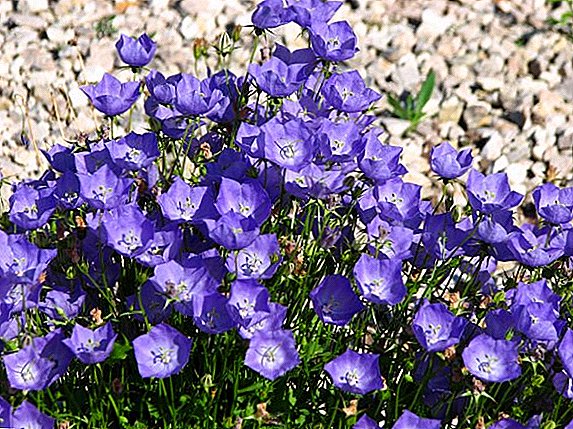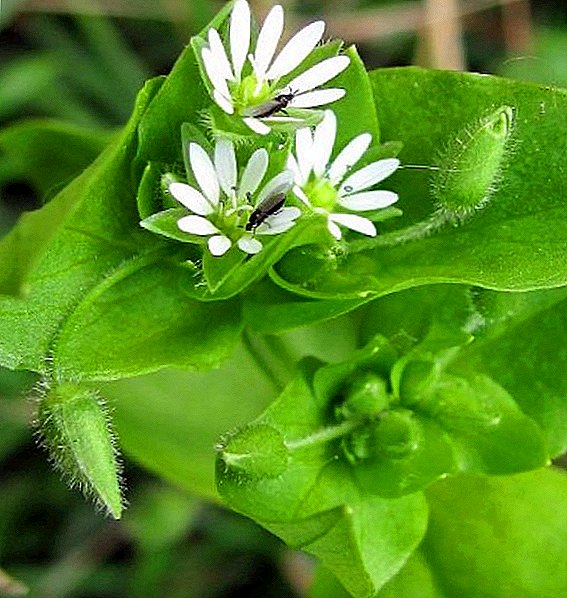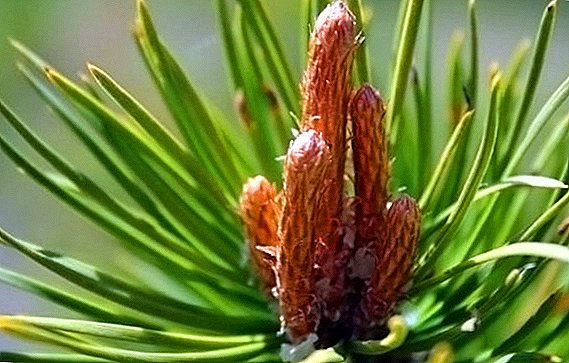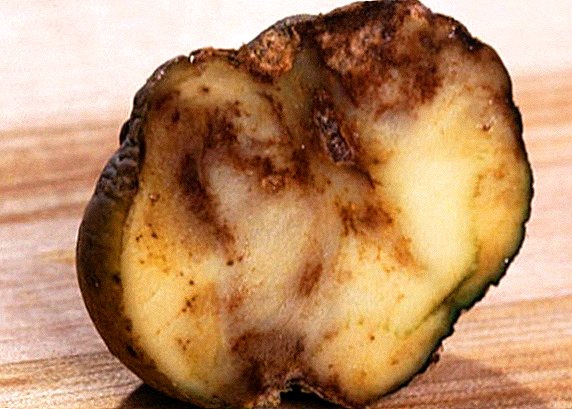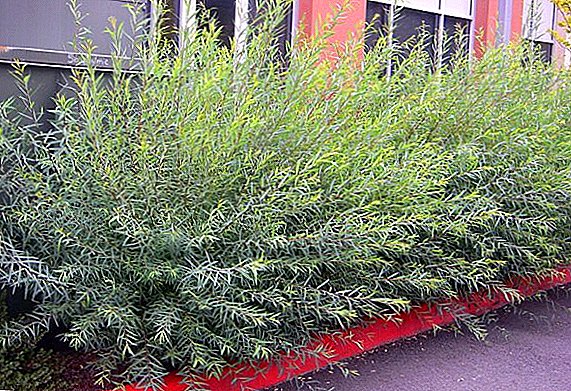 Neat spherical shrub is often used in landscape design. Unpretentious and tenacious, it gives the site a very picturesque view. We will tell you more about purple willow, its varieties, planting and caring for it, and how to apply it.
Neat spherical shrub is often used in landscape design. Unpretentious and tenacious, it gives the site a very picturesque view. We will tell you more about purple willow, its varieties, planting and caring for it, and how to apply it.
Botanical description
Purple willow belongs to the willow family. In appearance is a shrub with thin reddish branches. The height of the bush can reach 4 m, but most often grows no higher than 1 meter. The leaves are thick, narrow and sharp, bluish in color. 
Did you know? The name "purple" comes from the color of willow earrings - an unusual bright purple color.Shrub blossoms in early spring, sometimes even before the leaves appear on it.
Popular varieties
The beautiful appearance of the plant has caused the expected interest from the breeders. They bred various varieties:
- purple willow "Nana" - grows to a height of one and a half meters, the diameter of the crown reaches two meters. It tolerates winter and is resistant to frost. In addition to landscape design, it is used to secure the banks of reservoirs from collapse;
- purple willow "pendula" - differs in a weeping form of krone and small lime leaves. Small height;
- purple willow "Glacilus" - up to one meter high, spherical. Elegant shrub with thin branches and small leaves. The shape resembles a cloud;
- purple willow "Lighthouse" - grown in the Urals, for weaving from the vine. Due to the fact that it turned out quite decorative shrub, it is also used to create hedges.




Get acquainted with the peculiarities of growing other willow species: weeping, goat, dwarf, spherical.
Growing conditions
Now let's talk about where you can grow decorative purple willow.
Choosing a place
The plant prefers bright places. Therefore, choose a landing place in the sun or in light shade. Otherwise, the plant will not be able to get its decorative look, it will be faded and not so voluminous.
Soil mix
Grow a bush can on almost any soil. But it is better to pick up a fertile soil with neutral acidity.  If the site is dominated by heavy and clay soil, then in the planting pit it is necessary to arrange a drainage of stones and sand.
If the site is dominated by heavy and clay soil, then in the planting pit it is necessary to arrange a drainage of stones and sand.
Planting seedlings
Planting procedure is as follows:
- Dig a hole a little larger than the roots.
- Pour half a bucket of water into the pit.
- Put a seedling and pour out the mixture of fertile land, peat, sand, humus or compost.
- Ram the ground and pour again.
Breeding methods
Plant a plant on the site can be not only cuttings, but also seeds.
Seeds
Growing a tree from seeds is troublesome and long. But sometimes in another way to grow a willow just does not work.
Seeds in earrings appear after flowering. Another month they ripen and in May and June are ready to harvest.
Important! Willow seeds are viable for no more than 10 days. Then they die due to drying out.Seeds germinate only on the surface of the earth. Therefore, after collecting them put on the soil in the tank for growth. As a mixture, use compost and sand in equal proportions. Keep the soil constantly wet, the seeds can not be dried. For greater effect, close the container with the seed film or glass. Shelter is removed when the second leaf is opened. After sprouts reach 1 cm, they are planted in the ground in special boxes.
 Upon reaching 5 cm sprouts are ready for growth in open ground. Disembarkation of young shoots should be carried out no later than September, so that they have time to take root before frost.
Upon reaching 5 cm sprouts are ready for growth in open ground. Disembarkation of young shoots should be carried out no later than September, so that they have time to take root before frost.Cuttings
It is much easier and faster to plant shrub cuttings.
Harvest them in the spring, before leafing. The material used annual twigs covered with bark. They are cut into twigs 15 cm long and placed in water, or instilled into damp earth.
Important! It is necessary to drip so that no more than 2-3 buds remain on the surface.The shrub grows well, so additional processing of cuttings can be avoided. It is enough to ensure regular watering and constant soil moisture.

Willow care
Caring for willow is not at all difficult. Viable and unpretentious shrub requires only regular watering. Although it may endure a brief drought, but without regular watering the shrub loses its beautiful appearance and may die. In addition to the usual watering at the root, willow is necessary to ensure the leaves are moistened with a hose or a watering can. This procedure should be carried out early in the morning or after sunset.
Special feeding should not be carried out. In the spring you can make 60-80 grams / bush nitroammofoski for a set of green mass.  An important procedure is loosening. But it should be carried out carefully. If for young plants the loosening depth can reach 20-30 cm, then adults process it no deeper than 10 cm, since there is a risk of damaging the delicate roots of the bush.
An important procedure is loosening. But it should be carried out carefully. If for young plants the loosening depth can reach 20-30 cm, then adults process it no deeper than 10 cm, since there is a risk of damaging the delicate roots of the bush.
In the spring, it is worth treating the plant for protection against pests (flower flies, willow moths) and against diseases (powdery mildew, black spot). To protect against diseases, fungicides ("Topaz") are used, and insecticides ("Aktara", "Bi-58 new") and Bordeaux liquid are used to remove pests.
Use of ornamental shrubs
Purple willow is used in landscape design to create a hedge, design rose gardens, to decorate ponds. In winter, it successfully stands out against the background of other bushes and trees with its neat crown.
The fastest growing bushes for hedges are: thuja, turn, boxwood, hawthorn, forsythia, privet, barberry of Thunberg.
 You can form it in the form of a ball, and you can put it into free growth.
You can form it in the form of a ball, and you can put it into free growth.
Did you know? Young willow branches are used in Orthodoxy instead of palm leaves on Palm Sunday.Viable, unpretentious, but such a beautiful purple willow will be a wonderful decoration for your site.




